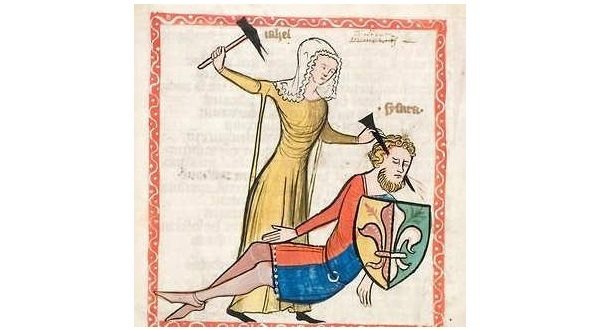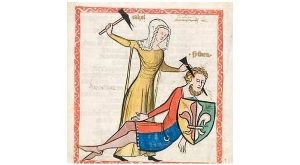Beauty, Tents, and Pegs
We begin with a few random thoughts and will attempt to tie them together.
Long before shuls and others started erecting tents to accommodate those who wished to daven with a minyan but either did not want to enter a shul during these corona times, or the shul’s spacing requirements could not accommodate them, avada you recall that the heylige Toirah to include the Noveeis replete with mentions of tents and their significance. There are no fewer than100 mentions of tents in Tanach and many have back stories associated with the tent. Delving into each of them will require longer attention spans than most of you have. Ober, let’s quickly look at a few.
 Going back to when our zeyda Avrohom was a youngish 99 years of age, we learned that the RBSO made a personal visit to him as he was -post bris- sitting in his tent longing -while he was somewhat shorter, if you chap- for guests. A medrish tells us that Avrohom -as do we in 2020- kept the four flaps of his tents open so that wayfarers would stop by from any direction. Let’s also recall the heylige Toirah teaching us that a 40-year-old Yitzchok fell in love with a youngish Rivka -as young as three according to some- when he brought her into his mother’s tent. Says the heylige Toirah (Bereishis 24:67), azoy: “Yitzchok brought her into the tent of his mother Soro, and he married Rivka. So she became his wife, and he loved her; and Yitzchok was comforted after his mother’s death.”
Going back to when our zeyda Avrohom was a youngish 99 years of age, we learned that the RBSO made a personal visit to him as he was -post bris- sitting in his tent longing -while he was somewhat shorter, if you chap- for guests. A medrish tells us that Avrohom -as do we in 2020- kept the four flaps of his tents open so that wayfarers would stop by from any direction. Let’s also recall the heylige Toirah teaching us that a 40-year-old Yitzchok fell in love with a youngish Rivka -as young as three according to some- when he brought her into his mother’s tent. Says the heylige Toirah (Bereishis 24:67), azoy: “Yitzchok brought her into the tent of his mother Soro, and he married Rivka. So she became his wife, and he loved her; and Yitzchok was comforted after his mother’s death.”
The RBSO appeared to, or met with Moishe -several times- in a tent, the Ohel Moed (the Tent of Meeting) and the Mishkan project also describes the building of a tent. As an aside the Mishkan is also called a “tent” on account of the curtains of goats’ hair that rested upon the curtains of the Mishkan: Grada, traditional and critical scholars agree that Moishe’s Ohel Moed (Tent of Meeting) as described in Shmois 33 is not the same as the Ohel Moed Tabernacle referenced in other biblical texts. Seemingly tents were ubiquitous, all over the heylige Toirah. The bottom line: Tents were efsher the central place where the RBSO appeared. Do tents have special powers? Do they attract the RBSO’s essence more so than do shuls? Do they convey special powers upon those sitting inside of them? Did they ever? The heylige Toirah also tells us that when the twins Yaakov and Eisav grew up -when they reached bar mitzvah age, so says Rashi, they began to go their separate ways. Eisav enjoyed hunting – seemingly, according to the medrish and others, his hunting extended to include married woman, say it’s not so. Ober not so our zeyda Yaakov who enjoyed sitting indoors in tents. Says the heylige Toirah (Bereishis 25:27), “And Yaakov was a simple man (ish tam) who dwelt in tents.” Says the medrish (Bereishis Rabba 63:10): the tent Yaakov enjoyed sitting in was none other than the Yeshiva of Shem and Ever. Shoin, seemingly the first ever yeshiva had its classes in a tent. Exactly what was being studied pre matan-Toirah is avada hotly debated, ober let’s recall it’s a medrish.
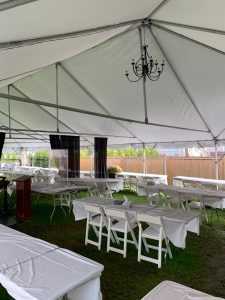 The bottom line: if the heylige Toirah mentions tents so many times, and what took place in them, there is zicher significance to them. Do magical things happen in them? We will review what one woman did inside of hers and how her actions changed the course of some Jewish history.
The bottom line: if the heylige Toirah mentions tents so many times, and what took place in them, there is zicher significance to them. Do magical things happen in them? We will review what one woman did inside of hers and how her actions changed the course of some Jewish history.
Over the past ten years, the Ois has, on many an occasion, told you how the RBSO looks out for His flock of Yiddin. Hidden -may times in plain sight in the writings of our sages- enterprising Yiddin have figured out how to make a living. Those who learn the heylige Toirah, Gemora, and even various minhogim brought down by various rabbis of yore, figured out what they all had in common: business opportunities! That’s how pre-washed and inspected lettuce, filtered water spouts, kosher water, certified cups, napkins and many other enterprises came about: call it more kosher! The list goes on. What’s new in 2020? What’s new is that tent manufacturers and specifically those who sell them, or make a living renting them out for parties and other events, are suddenly doing great! For them, business is booming. In an economy where millions remain unemployed, where businesses are -with some consistency- filing for bankruptcy and reorganization, or on their way to going out altogether, those who rent tents, tables, chairs, fans, lighting, heaters and or cooling systems -and let’s not forget those who rent portable bathrooms for those on the go- are mamish enjoying an incredible run of good fortune. Those selling masks, gloves, sanitizers and disinfectants are in corona heaven. The bottom line: Every once in a while, the RBSO looks down and rearranges the world. Seemingly, the RBSO decided that it’s their time to shine. It’s what He does! Shoin!
Just the other day the heylige Ois commented to his eishes chayil and to his kids (three of whom moved back in from the city) on the number of shuls that have popped up during corona times. In under two minutes the Ois can walk to four different backyards where daily minyonim are held. And as Rosh Hashono approached last week, five of the six he can walk to in under five minutes, had tents erected in their yards just in case. In case of what? In case of inclement weather. In case of extreme heat from the sun. Ober the RBSO -as always- had the last laugh, doesn’t He always? While most also installed fans in different sizes for additional comfort, who could have imagined that the RBSO would so arrange things that many were instead forced to wear heavy sweaters, jackets, gloves and even scarves? The bottom line: let’s not forget the heylige Gemora (Taanis 2a) which teaches us that the RBSO did not assign weather patterns to one of His angels; He remains firmly in control. “R’ Yoichonon said: Three keys the Holy One blessed be He has retained in His own hands and not entrusted to the hand of any messenger, namely, the Key of Rain, the Key of Childbirth, and the Key of the Revival of the Dead.” Shoin, lesson learned. The bottom line: it’s good to have keys and that’s efsher why chasiddim carry so many.
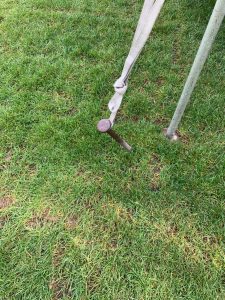 One more random thought. So happens that people naturally inspect tents up close. We like to see their design and the architecture which makes them stand. We of course thank the RBSO profusely for creating the “umoisho’ oilom” (goyim) to erect and take them down. Lets’ get real: this is not a job for Yiddin who can barely get their 8 ft tall succah’s erected and dismantled. Can you imagine the fiasco were Yiddin to attempt erecting a tent? Oy vey! Had Yiddin been charged with tent erection, few would have been built and fewer would have remained standing over Yom Tov here on the East Coast where the winds were gusting shtark. As well, we look carefully to see how and if they were staked into the ground, and how the lighting and all else is attached. Just this morning as the Ois was davening shachris at the very elegant Felder/Flegman tent over on Monroe Avenue -chandeliers and a Neir Tomid included- he found himself staring at the pegs holding the tent in place and began to imagine what damage could be inflicted by the pegs. The pegs are large, thick and designed to do their job. And mamish at that moment, he began to reflect back on a time when a tent peg helped win a Jewish war. Which war? A war mentioned in the Novee. Grada it’s a haftorah we read on Parshas Bishalach. Why are we talking about Bishalach now? Because a tent and a peg played pivotal roles and the Novee tells us how. Avada there are lessons for all men to learn about Jewish women and their peg skills.
One more random thought. So happens that people naturally inspect tents up close. We like to see their design and the architecture which makes them stand. We of course thank the RBSO profusely for creating the “umoisho’ oilom” (goyim) to erect and take them down. Lets’ get real: this is not a job for Yiddin who can barely get their 8 ft tall succah’s erected and dismantled. Can you imagine the fiasco were Yiddin to attempt erecting a tent? Oy vey! Had Yiddin been charged with tent erection, few would have been built and fewer would have remained standing over Yom Tov here on the East Coast where the winds were gusting shtark. As well, we look carefully to see how and if they were staked into the ground, and how the lighting and all else is attached. Just this morning as the Ois was davening shachris at the very elegant Felder/Flegman tent over on Monroe Avenue -chandeliers and a Neir Tomid included- he found himself staring at the pegs holding the tent in place and began to imagine what damage could be inflicted by the pegs. The pegs are large, thick and designed to do their job. And mamish at that moment, he began to reflect back on a time when a tent peg helped win a Jewish war. Which war? A war mentioned in the Novee. Grada it’s a haftorah we read on Parshas Bishalach. Why are we talking about Bishalach now? Because a tent and a peg played pivotal roles and the Novee tells us how. Avada there are lessons for all men to learn about Jewish women and their peg skills.
Let us then hearken back and shout out Yael, she the eishes chayil of Chever whose inspiring story can be found in the heylige Novee (Shoiftim4) where we read azoy. Bikitzur, (in short) here’s what the Novee tells us. The Yiddin were at war. Devoirah summoned her general, Barak, to wage war against the mighty Canaanite general Sisera and his army. Barak insisted that Devoirah accompany him to battle, which she agreed to do. To war they went and destroyed the Canaanite army, ober Sisera got away on foot. He ran to the tent of Chever the Kenite, thinking he would be safe there since there was a good relationship between him and the Canaanite king. Ober, Chever’s wife Yael was a courageous woman. She hid him in her tent, giving him a false sense of security. What exactly that means, we will read below and is of course hotly debated among many a medrish. As you can imagine, their imaginations of what took place are in conflict with one another, but let’s read them anyway. According to some, he asked for some water, and instead she gave him milk, which made him sleepy. As he slept, she took a tent peg and a mallet and drove the peg into his temple, and he died. Says the Novee in posik 21 azoy:
וַתִּקַּ֣ח יָעֵ֣ל אֵֽשֶׁת־חֶ֠בֶראֶת־יְתַ֨ד הָאֹ֜הֶלוַתָּ֧שֶׂם אֶת־הַמַּקֶּ֣בֶת בְּיָדָ֗הּ וַתָּב֤וֹאאֵלָיו֙ בַּלָּ֔אטוַתִּתְקַ֤ע אֶת־הַיָּתֵד֙ בְּרַקָּת֔וֹ וַתִּצְנַ֖ח בָּאָ֑רֶץוְהֽוּא־נִרְדָּ֥ם וַיָּ֖עַףוַיָּמֹֽת׃
“Yael, the wife of Chever the Kenite, took a tent peg, placed a hammer into her hand, and stole furtively to him. She embedded the peg in his forehead, and impaled it into the ground. He was asleep and exhausted, and died.” Shoin, war over, the Yiddin won. A woman would -in the end- get credit for helping to win the war. That woman was Yael.
And now for some color on the power of a woman and her peg. The medrish heaps praise on Yael, and includes her among the devout women converts, together with Hogor, Osnas (she married Yoisef), Tzipoirah (shiksa daughter of Yisroy also a goy who converted to marry Moishe), Rochov the shiksa innkeeper/harlot about whom we wrote a few weeks backand who converted and married Yishoishua), and Rus, also a shiksa convert who married Boaz who -according to some- came and went on the same night, if you chap. Let’s not forget Paroy’s own daughter Bisya who according to the same medrish also converted. Where can you find this? In the Medrish (check out the Yalkut Shimoni on Yishoishua para. 9, from Midrash Tadshe). The bottom line: shiksa converts seemingly make good wives and the RBSO loves them. Moreover, as you read above, they are also quite handy. That being said, don’t try bringing one home; most parents are not quite as understanding as is the RBSO.
Ober who was this Yael and how did she know what to do with a peg? And the answer? Recall that she grew up as a shiksa. The heylige Gemora (Megillah 15a) tells us azoy about this former shiksa: she was seemingly so beautiful that merely upon hearing her voice would cause men to recall her and would arouse their lust. Avada she was a shiksa! Shoin, with a few days before Yom Kippur we won’t dig deeper into her beauty and the lust she seemingly aroused in men.
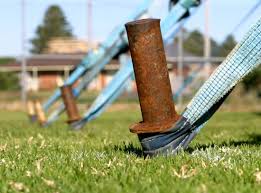 Ober, because the narrative is somewhat vague as to precisely what happened between Yael and Sisera in the tent before he fell asleep, and before she used the tent’s peg to kill him, a few medroshim took liberties to fill in the blanks. Says the Novee (Judges 4:18): “so he entered her tent.”; and the shaylo is azoy: is this Scripture’s euphemistic description of his having intercourse with her? Or is the text simply to be understood literally? And why are we discussing this topic mamish days before Yom Kippur when we’re getting ready to ask the RBSO’s forgiveness for a litany of sins which may or may not include tent and peg abuse, if you chap? Let’s find out.
Ober, because the narrative is somewhat vague as to precisely what happened between Yael and Sisera in the tent before he fell asleep, and before she used the tent’s peg to kill him, a few medroshim took liberties to fill in the blanks. Says the Novee (Judges 4:18): “so he entered her tent.”; and the shaylo is azoy: is this Scripture’s euphemistic description of his having intercourse with her? Or is the text simply to be understood literally? And why are we discussing this topic mamish days before Yom Kippur when we’re getting ready to ask the RBSO’s forgiveness for a litany of sins which may or may not include tent and peg abuse, if you chap? Let’s find out.
 Nu, there are -at least- two approaches to this question in various medroshim. According to one, Sisera did not touch Yael. He fled to her and begged but begged for water: “Please give me some water,” and she opened the skin of milk and gave him some to drink. Ober his yetzer horo (evil urge) was aroused, and he demanded that she sin with him, if you chap. What did she do? Says the medrish (Midrash ha-Gadol, Vayeshev 29:80), azoy: she took thetent peg and drove it through his temple. Lesson learned? When the woman says no; it’s no! Another lesson: when in a tent, keep your urges to a minimum.
Nu, there are -at least- two approaches to this question in various medroshim. According to one, Sisera did not touch Yael. He fled to her and begged but begged for water: “Please give me some water,” and she opened the skin of milk and gave him some to drink. Ober his yetzer horo (evil urge) was aroused, and he demanded that she sin with him, if you chap. What did she do? Says the medrish (Midrash ha-Gadol, Vayeshev 29:80), azoy: she took thetent peg and drove it through his temple. Lesson learned? When the woman says no; it’s no! Another lesson: when in a tent, keep your urges to a minimum.
Another medrish adds that by merit of Yael’s flight from sin, the RBSO included His name with hers, and publicized her innocence. They deduce this from the words of posik 18 “and she covered him with a semikhah.” What the hec is that you ask? They note that semikhah is a hapax legomenon (a word that appears only once in the entire heylige Toirah), and seek to interpret it. Some say that Yael covered Sisera with a garment, ober others – as found in the heylige Gemora- argue that she covered him with a large washing bowl, under which he would be concealed. A third view maintains that this unique word is meant to publicize Yael’s innocence, and is to be read with the letter shin, and as two words: shemikan (My name is here) – G-d’s name attests that the wicked one did not touch Yael (Vayikro Rabbah 23:10). The bottom line: this exegetical account clears Yael of any blame, and emphatically declares that nothing happened between her and Sisera when she brought him into her tent. Nothing more than a peg being driven into his head and murder!
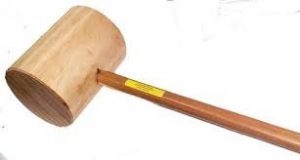 Ober not so fast. Another account has Sisera lying with her, say it’s not so please, and they bring proof from Perek 5 posik 27 where it says azoy: “At her feet he sunk, he fell, he lay; at her feet he sunk, he fell; where he sunk, there he fell down dead.” The words “sunk,” “fell” and “lay” recur a total of seven times in this posik, from which a number of sages derive that Sisera engaged in intercourse with Yael seven times during their encounter. Seven times? You hear that Raboyseyee? Shoin! The good news: even if emes, this approach also clears Yael of any guilt, and establishes that “sin took place Leshaim Shomayim (for Heaven’s sake) which is greater than fulfilling a commandment that is not done for Heaven’s sake.” One more time: if it’s taka emes that Yael went seven rounds, the sinful intercourse in which Yael -then married- engaged with Sisera was for Heaven’s sake, in order to exhaust him so that she could then kill him, it was mamish a mitzvah. Shoin, only a goy can go seven rounds before being knocked out. A Yid would have long been sleeping. The bottom line: this lishaim shomayim excuse also worked for Loit’s daughters when each took turns bedding their own father. Something to try if all else fails!
Ober not so fast. Another account has Sisera lying with her, say it’s not so please, and they bring proof from Perek 5 posik 27 where it says azoy: “At her feet he sunk, he fell, he lay; at her feet he sunk, he fell; where he sunk, there he fell down dead.” The words “sunk,” “fell” and “lay” recur a total of seven times in this posik, from which a number of sages derive that Sisera engaged in intercourse with Yael seven times during their encounter. Seven times? You hear that Raboyseyee? Shoin! The good news: even if emes, this approach also clears Yael of any guilt, and establishes that “sin took place Leshaim Shomayim (for Heaven’s sake) which is greater than fulfilling a commandment that is not done for Heaven’s sake.” One more time: if it’s taka emes that Yael went seven rounds, the sinful intercourse in which Yael -then married- engaged with Sisera was for Heaven’s sake, in order to exhaust him so that she could then kill him, it was mamish a mitzvah. Shoin, only a goy can go seven rounds before being knocked out. A Yid would have long been sleeping. The bottom line: this lishaim shomayim excuse also worked for Loit’s daughters when each took turns bedding their own father. Something to try if all else fails!
In “Shiras Devoirah (Shoiftim 5:24) (the Song of Devoirah) she sang azoy: “Most blessed of women be Yael, wife of Chever the Kenite, most blessed of women in tents.” The midrashic exposition understands the “women in tents” to be Soroh, Rivka, Rochel and Leah, each of whom is mentioned in reference to a tent. Says the heylige Gemora (Nozir 23b): Yael’s deed is more blessed than those of the four Matriarchs. One possible explanation of this midrash, that places Yael on a higher level than the Matriarchs of the Jewish nation, is that the latter engaged in sexual relations for pleasure and to produce offspring, while Yael acted with the sole aim of killing Sisera. Love it! Rashi adds azoy: the Matriarchs told their husbands to come to their handmaidens, intending this not for a sacred purpose, but because they were jealous of one another, and consequently Yael’s deed was greater than theirs.
There are other medroshim which discuss Yael’s heroic actions ober they all agree that her actions -even in the course of intercourse or not, and the use of her tent peg to kill Sisera were valid and kosher.
We close the Yael tent peg discussion with one more medrish (Midrash Eishes Chayil 31:19, Batei Midrashos, vol. 2) which applies the verse from the Eishes Chayil (song, not the Oisvorfer’s wife) passage (Prov. 31:19) where we read azoy: “She sets her hand to the distaff” to Yael, who did not kill Sisera with a conventional weapon, but with a tent peg, with the strength of her hands.
All the above midroshim, taken as a whole, teach that the Rabbis expressed their positive attitude to Yael, regardless of whether they explained that there was no sexual act between her and Sisera, or whether they understood that he had, in fact, lain with her. Her actions were guided by a clear goal, and even if this entailed a sin, she acted for the sake of Heaven, and thereby saved the Yiddin from annihilation. Gishmak!
By the way, the Ois forgot to mention that this shabbis, Parshas Ha’a’zenu is also “Shabbis Shuva” (shabbis of return) and if your tent was erected in the wrong places this past year, and or, if you abused your peg, and if it wasn’t leshaim shomayim (for heaven’s sake as was Yael’s) now is the time to tell the RBSO you are sorry and won’t repeat that behavior. Onemore bottom line: do not try that leshaim shomayim excuse at home with the eishes Chayil. And if you see yours holding a peg in her hand, run for your life.
The Ois will be back tomorrow or after shabbis with his annual michila form; be on the lookout.
A gittin Shabbis-
The Heylige Oisvorfer Ruv
Yitz Grossman
